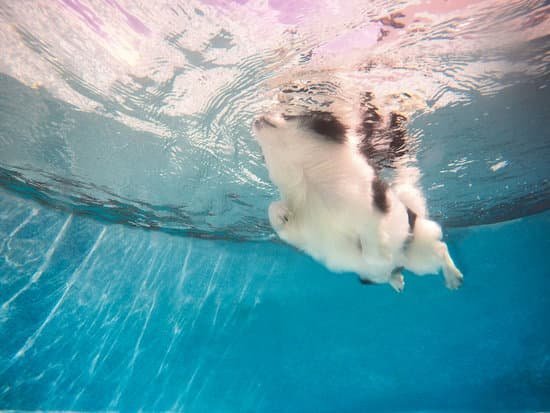Are you tired of calling your dog’s name and having them completely ignore you? Look no further than a recall dog training to improve your pet’s obedience. Recall training is essential for any dog owner, as it not only ensures the safety of your furry friend but also fosters a stronger bond between you and your pet.
Recall training teaches dogs to come when called, providing them with necessary direction and enhancing their responsiveness to commands. In this article, we will delve into the significance of recall dog training, the basics of teaching your dog the come command, selecting the right tools for training, practicing in various environments, tackling common challenges, and utilizing positive reinforcement techniques.
By understanding the principles behind recall dog training and implementing effective strategies, you can cultivate a well-behaved and loyal companion. Whether it’s in your backyard or at the local park, mastering recall can be both rewarding and beneficial for both you and your pet.
The Basics of Recall Training
Recall training is essential for keeping your dog safe and under control in various situations. Teaching your dog the come command is a fundamental aspect of recall training. The come command allows you to call your dog back to you, even when they are off-leash, providing a reliable way to manage their behavior and prevent potential dangers.
To effectively teach your dog the come command, consider using the following techniques:
- Start with a strong foundation: Before teaching the come command, ensure that your dog has mastered basic obedience commands such as sit, stay, and heel.
- Use positive reinforcement: When training your dog to come when called, utilize treats, praise, or a favorite toy to reward them for responding correctly.
- Practice in a controlled environment: Begin recall training in a quiet and familiar space with minimal distractions. Gradually increase the level of difficulty as your dog becomes more proficient at responding to the come command.
It’s important to remember that consistency and patience are key when it comes to recall training. Repeat the come command regularly during daily interactions with your dog and make sure to always reward them for complying. With time and consistent practice, your canine companion will understand and reliably respond to the recall cue.
Choosing the Right Training Tools
When it comes to recall dog training, having the right tools can make a world of difference in the success of your efforts. From harnesses to long leads, there are various equipment options that can help you effectively train your dog to come when called. Here’s a closer look at some essential training tools for recall dog training.
Harnesses
One of the most commonly used tools for recall training is a harness. A harness provides better control over your dog and reduces strain on their neck compared to using a collar. When choosing a harness for recall training, opt for one that fits securely without causing discomfort to your pet. It is important to introduce the harness gradually and associate it with positive experiences during training sessions.
Long Leads
Long leads or training lines are another valuable tool for recall training, especially in outdoor environments where you need to give your dog more freedom while still maintaining control. A long lead allows your dog to explore and roam while still ensuring that they are within reach, making it easier to practice recall commands in real-life scenarios.
Other Equipment
In addition to harnesses and long leads, there are other types of equipment that can aid in recall dog training. For example, treat pouches or clickers can be helpful for rewarding your dog’s good behavior during training sessions and strengthening their association with the come command. It’s important to choose equipment that suits your dog’s size, temperament, and individual needs to make the training process as effective as possible.
By selecting the right training tools for recall dog training, you can set yourself and your furry friend up for success in mastering the crucial skill of coming when called. Remember that each dog is unique, so take the time to assess what equipment will work best for your specific circumstances and always prioritize positive reinforcement during the training process.
Practicing Recall in Different Environments
When it comes to recall dog training, practicing in different environments is essential for fostering a reliable response from your furry friend. While your dog may have mastered the come command in the comfort of your own backyard, it’s important to gradually expose them to various settings to ensure that they can effectively respond to your call in any situation. This section will explore the importance of training in different environments and provide tips for successful practice sessions.
Training your dog in different environments helps to generalize the recall behavior, making it more likely that they will respond promptly regardless of the surroundings. Start by introducing new environments gradually, beginning with low-distraction areas such as a quiet street or an empty parking lot.
Once your dog has mastered recall in these settings, you can gradually increase the level of distraction by moving to busier areas such as a local park or a pet-friendly beach. Consistency is key, so be sure to practice regularly in a variety of locations.
When practicing recall in different environments, it’s important to use positive reinforcement techniques such as treats, praise, and play to encourage successful responses. Bringing along your dog’s favorite treats or toys can help keep them motivated and focused on you amidst potential distractions.
Additionally, using a long lead during practice sessions can provide a safety net while allowing your dog some freedom to roam and explore their environment. By consistently practicing recall in different settings and using positive reinforcement, you can help build trust and communication with your dog while ensuring their safety in any situation.
Common Challenges in Recall Training
When it comes to recall dog training, there are common challenges that dog owners may encounter while teaching their furry companions the come command. Dealing with distractions, fear, and other obstacles is an inevitable part of the training process, but with patience and consistent practice, these challenges can be overcome. Here are some common challenges in recall training and how to address them:
1. Distractions: Dogs can easily get distracted by various stimuli such as other animals, people, or even interesting scents. To combat this challenge, it’s important to gradually increase the level of distraction during training sessions. Start in a quiet and familiar environment before moving on to more distracting settings like a park or a busy street.
2. Fear: Some dogs may have a fear of certain environments or experiences, which can hinder their ability to respond to the recall command. It’s crucial to identify the source of your dog’s fear and work on desensitizing them through positive reinforcement techniques. Gradual exposure combined with treats and praise can help build their confidence and trust in unfamiliar situations.
3. Other Obstacles: From stubborn behavior to lack of motivation, there are various other obstacles that may arise during recall training. One effective way to address these challenges is by making the training sessions fun and rewarding for your dog. Incorporating playtime, toys, and high-value treats can make the learning process enjoyable for them.
Additionally, seeking guidance from a professional trainer who specializes in recall dog training can provide valuable insights and tailored strategies for addressing specific challenges that you may encounter with your dog.
By understanding these common challenges and implementing effective strategies to address them, you can make significant progress in establishing a strong recall with your dog. Remember that consistency and patience are key when it comes to overcoming obstacles in recall training.
Positive Reinforcement Techniques
When it comes to teaching your dog the come command and ensuring a successful recall, positive reinforcement techniques can be incredibly effective. Using treats, praise, and play can help motivate your dog to respond to your recall cues consistently. This section will explore how you can utilize these techniques to encourage successful recall in various situations.
The use of treats as a form of positive reinforcement is a popular method in recall dog training. By offering a tasty reward when your dog responds to the come command, you are reinforcing the behavior and increasing the likelihood that they will obey in the future.
It’s important to use high-value treats that your dog finds especially enticing, such as small pieces of cooked chicken or freeze-dried liver. The timing of treat delivery is also crucial – it should be immediate and directly tied to your dog’s response to the recall cue.
lets your dog know that they have done something right, reinforcing their response to the come command. Play, whether it’s with a favorite toy or simply engaging in some roughhousing, can further reinforce their good behavior and create positive associations with coming when called. By incorporating these positive reinforcement techniques into your recall training routine, you can build a strong foundation for reliable recall behavior in various environments.
| Positive Reinforcement Techniques | Recall Dog Training |
|---|---|
| Using high-value treats as rewards | The timing of treat delivery is crucial |
| Praise as verbal reinforcement | Incorporating play into recall training |
Building Trust and Communication
Recall training is not just about teaching your dog to come when called, but it is also an opportunity to strengthen the bond and communication between you and your pet. Building trust with your dog is crucial in ensuring successful recall, as it establishes a sense of security and reliability in your relationship. When your dog feels safe and trusts you, they are more likely to respond positively to recall commands.
One way to build trust and strengthen the bond with your dog during recall training is through positive reinforcement techniques. Using treats, praise, and play as rewards for coming when called can create a positive association with the command. This encourages your dog to view recall as a fun and rewarding experience, leading to increased trust and willingness to comply.
Communication is also an essential aspect of building trust during recall training. Consistency in using verbal cues, body language, and hand signals helps your dog understand what is expected of them during training sessions. Clear communication instills confidence in your dog and fosters a deeper understanding between the two of you.
According to research conducted by the American Kennel Club (AKC), positive reinforcement methods such as using rewards during recall training have been shown to be effective in strengthening the bond between dogs and their owners. Consistent use of these techniques has led to improved trust, better communication, and increased compliance among trained dogs.
Troubleshooting
Having trouble with your dog’s recall training? Don’t worry, you’re not alone. Many dog owners face challenges when it comes to getting their furry friends to come when called. In this section, we’ll discuss some common issues that may arise during recall training and provide tips on how to overcome them.
Identifying the Problem
The first step in troubleshooting recall training is to identify the specific issues that are causing your dog to struggle. Is your dog easily distracted by other dogs or people? Does he show signs of fear or anxiety in certain environments? By pinpointing the root cause of the problem, you can tailor your approach to address it effectively.
Strategies for Success
One effective strategy for addressing recall challenges is to gradually increase the level of difficulty in your training sessions. Start in a familiar and quiet environment, such as your backyard, and gradually work up to more distracting settings like a park or busy street. This will help build your dog’s confidence and set him up for success.
When to Seek Professional Help
If you’ve been consistently working on recall training with little progress, it may be time to seek professional help. A certified dog trainer can provide personalized guidance and support based on your dog’s unique needs. They can also offer valuable insight into any underlying behavior issues that may be hindering your dog’s recall abilities.
By being patient and consistent with your approach, as well as seeking outside assistance when necessary, you can overcome any obstacles that arise during recall dog training and establish a strong bond of trust and communication with your furry companion.
Conclusion
In conclusion, recall training is a crucial aspect of ensuring the safety and well-being of your dog. By teaching your dog the come command and practicing recall in different environments, you are setting the foundation for a strong and reliable recall. It is important to choose the right training tools, such as harnesses and long leads, to aid in the training process.
Despite the common challenges that may arise during recall training, such as distractions and fear, positive reinforcement techniques can be used to encourage successful recall. Building trust and communication with your dog through recall training not only strengthens the bond between you and your pet but also enhances their overall obedience.
Ultimately, establishing a strong recall with your dog brings numerous benefits, including peace of mind when off-leash, improved safety both for your pet and others around them, and greater freedom during outdoor activities. In cases where your dog may be struggling with recall, do not hesitate to seek professional help from a certified dog trainer or behaviorist for additional support. With dedication and consistency in recall training, you can create a rewarding and fulfilling relationship with your canine companion.
Frequently Asked Questions
What Is Recall Dog Training?
Recall dog training is a method used to teach dogs to come back when called. It involves teaching the dog to respond to a specific command or signal, usually the word “come” or a whistle.
How Long Does It Take to Train a Dog to Recall?
The amount of time it takes to train a dog to recall can vary depending on the dog’s age, breed, and temperament. Some dogs may pick up the recall command quickly, while others may take longer to learn and master it. Consistent, patient training over several weeks or months is often necessary for reliable recall.
How Do You Improve a Dog’s Recall?
Improving a dog’s recall involves consistent practice and positive reinforcement. Using high-value treats, praise, and rewards can help reinforce the desired behavior.
Training sessions should be short and frequent, with a focus on making the recall command more enticing than any distractions in the environment. Gradually increasing the level of distraction during training can also help improve a dog’s recall in real-life situations.

Welcome to the blog! I am a professional dog trainer and have been working with dogs for many years. In this blog, I will be discussing various topics related to dog training, including tips, tricks, and advice. I hope you find this information helpful and informative. Thanks for reading!





